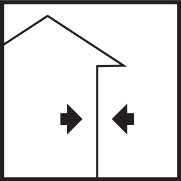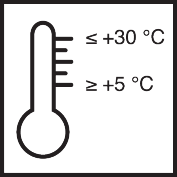Article No. 145225
M5, maximum grain size 1 mm High sulphate resistance and low alkali content (SR/NA) Trass-lime-cement joint mortar
Product specifications
On delivery
The stated values represent typical product characteristics and are not to be construed as binding product specifications.
Field of application
- First-time jointing and joint repair
- Brick and natural stone masonry
- Mortar joints 8 - 30 mm
Properties
- High sulphate resistance and low active alkali content (SR/NA)
- Very low tendency to effloresce
- Good flank adhesion
- Special colours (UV-resistant pigments) available
-
Preparation
-
Substrate requirements
Clean, dust-free and capable of supporting a load.
-
Preparations
Joint depth min. 2 cm or double the joint width.
Sanded joint sides can lead to lateral detachment.
-
-
Application
-
Apply the jointing in two layers if possible, press in the jointing mortar and level flush but do not "iron".
Only mix as much mortar as can be used within approx. 2 hours.
Pre-wet the open, cleaned joint.
Application of thin layers at the edges of defective areas can be facilitated by adding Remmers Haftfest to the mixing water (mixing ratio 1:10). In this case, hardening will be somewhat delayed but the bonding strength will be increased.
After application, work with a profiling tool (e.g. tubing).
Wait at least 24 hours before applying subsequent layers.
-
Application instructions
-
Once it has hardened, mortar must not be made workable again by adding either water or more wet mortar.
The type and duration of the reworking and surface treatment will influence the colour.
Slight deviations in colour between different batches are possible.
Protect wet mortar surfaces against frost, rain and drying out too quickly for at least 4 days.
-
-
Working tools / cleaning
-
Mixing tool, trowel, jointing iron, profiling tool (e.g. tubing)
Clean tools and equipment with water before the mortar sets.
-
Storage / shelf life
-
If stored in an unopened container and in a dry place, the product will keep for approx. 12 months.
-
Usage
-
Approx. 1.7 kg/l void
-
Apply to a large enough trial area to determine the precise amount required.
-
General information
-
May contain traces of pyrite (iron sulphide).
Do not use on gypsum-based substrates.
The characteristic data of the product were calculated under laboratory conditions at 20°C and 65% relative humidity.
Low chromate content in accordance with Directive 2003/53/EC.
The mixing water must be of drinking water quality.
Special colour according to colour number (MF no., colour swatches, NCS etc.) or submitted sample (in the case of changing or alternating colours, clearly mark the desired colour).
The colour that is obtained after drying and hardening depends on the ambient conditions and the processing method. For instance, a freshly smoothed surface will be lighter than one that is smoothed later or roughened. Different grain sizes of the same product may lead to slight differences in colour. Substrates soaked from the back may cause discolouration.
Always set up a trial area/trial areas first.
Alkaline binders may cause a dissolution process on non-ferrous metals.
Current regulations and legal requirements must be taken into account and deviations from these must be agreed separately.
The relevant test certificates must be observed when planning and carrying out work.
-
-
Disposal instructions
-
Larger quantities of leftover product should be disposed of in the original containers in accordance with the applicable regulations. Completely empty, clean containers should be recycled. Do not dispose of together with household waste. Do not allow to enter the sewage system. Do not empty into drains.
-
-
Safety / regulations
-
For further information on the safety aspects of transporting, storing and handling the product and on disposal and environmental matters, please see the current Safety Data Sheet.
-







![ZM HF [basic] ZM HF [basic]](https://m.remmers.com/gebindeabbildungen/2400w/52838.png?w=100&version=1)
![Clean AC [basic] Clean AC [basic]](https://m.remmers.com/gebindeabbildungen/2400w/173507.png?w=100)